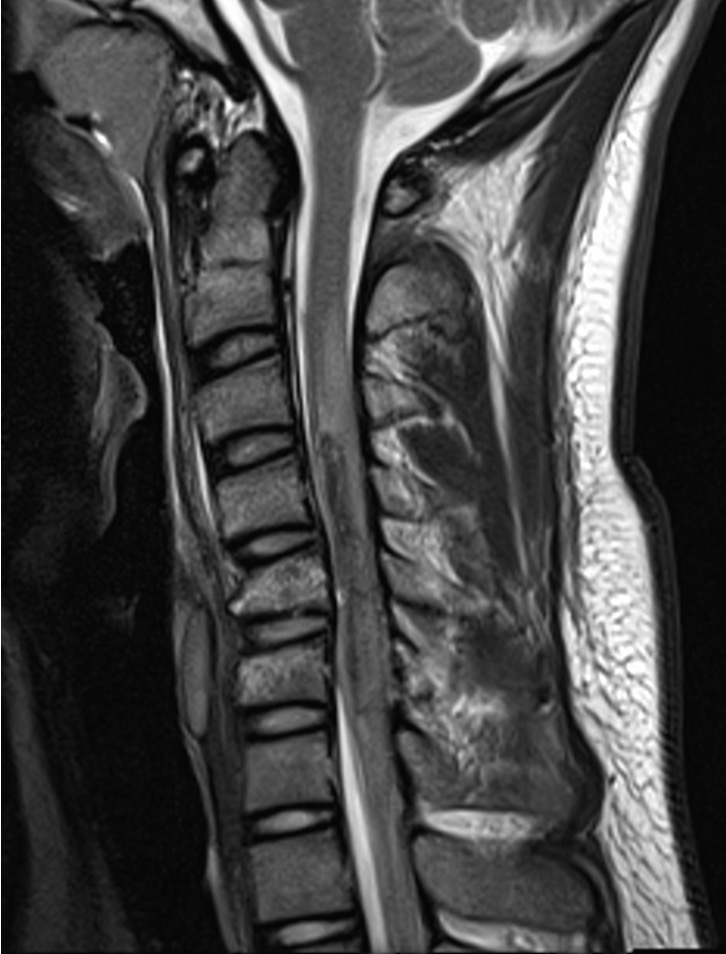Issues
Neurogenic shock
Blood pressure augmentation
Steroids
Surgical decompression
Anticoagulation
Cell based therapy
Chronic medical problems
Rehabilitation
Neurogenic Shock
Cause
Sympathetic tracts disrupted
- unopposed parasympathetic vagal tone
- loss of vasomotor tone with marked vasodilatation
- 19% incidence in cervical cord injury
- 7% incidence in thoraco-lumbar cord injury
Diagnosis
Hypotensive (SPB < 90) + bradycardia (HR < 80) + warm periphery
Management
Fluid resuscitation
Atropine (0.6 mg push) - for bradycardia
Inotropic support / noradrenaline - vasoconstriction and bradycardia
Pharyngeal suction & intubation stimulate vagus nerve
- may produce bradycardia & cardiac arrest
Blood pressure Augmentation
Issue
Hypoperfusion may contribute to ongoing post injury cord ischaemia
Guidance
Mean arterial BP should be maintained between 85–90 mmHg for the first 7 days following an acute SCI
- ICU admission
- vasopressors as needed
Results
Hawryluk et al J Neurotrauma 2015
- 74 patients in ICU with SCI
- higher average MAP values correlated with improved recovery in the first 2-3 days after SCI
- MAP values below 85 mm Hg correlated with a decrease in strength over the first 5-7 days after injury.
Steroids
Results
Bracken Cochrane Database Syst Review 2012
- review of 8 randomized control trials
- shown that methylprednisolone infusion if given within 8 hours, improves motor recovery
- give for 24 - 48 hours
- meta-analysis of high dose methylprednisolone
- 3 RCTs and 13 observational studies
- no evidence of improvement in neurological function
- increased risk of gastrointestinal hemorrhage and respiratory infection
Fehlings et al Global Spine J 2017
- systematic review
- methylprednisone administered within 8 hours improved mean motor scores
- no evidence of increased complications
Dosing
Methylprednisolone
- 30 mg/kg bolus
- 5.4 mg/kg/hr for 24 - 48 hours
Contra-indications
- > 8 hours after presentation
- penetrating spinal injury
- infection
- diabetes
- < 13 years old
- pregnancy
Medications under study
Riluzole
Sodium channel blocker
- encouraging results in animal models
- currently under investigation in patients
Minocycline
Tetracycline antibiotic that penetrates CSF
- downs grades inflammation
- RCT of 7 days minocyline infusion in 52 patients
- tendency towards improved outcomes with minocycline
- no signification results
Surgical Decompression
Timing
Controversy in the literature regarding timing
- generally accepted that early surgery improves outcomes
- STASCIS study (landmark paper)
- Prospective cohort sutdy (n=80) comparing early (<24h) vs late surgery
- Early surgery 19.8% of patients improved 2 grades (or more) compared to late on 8.8%
- systematic review of 16 studies and 3977 SCI patients
- improved outcomes with surgery < 24 hours
Yousefifard et al Arch Acad Emerg Med 2022
- systematic review of ultra-early (< 12 hours) decompression
- improved outcomes
- especially for cervical injuries and ASIA A
Outcomes
- major predictor of outcome
- intramedullary lesion length (IMLL) on MRI

Anticoagulation
Fehlings et al Global Spine J 2017
- recommend starting anticoagulation within 72 hours
- systematic review of 9 articles
- reduced rates of DVT with low molecular weight heparin
- reduced rates of DVT with commencing within 72 hours of SCI
Cell based therapies
Yousefifard et al Neuroscience 2016
- meta-analysis of neural stem / progenitor cells (NSPC) injections in animal models
- evidence of improved functional recovery
- better in acute phase of injury
Shinozaki et al Cells 2021 Review Article
- mechanisms of stem cell therapy in spinal cord injury
Chronic medical issues
| Respiratory |
C1-3 level - need portable ventilation |
C4 level - need CPAP at night | C4/5/6 level - phrenic nerve defunctioned, diaphragm paralysis | Low cervical level - paralysis intercostals |
| Gastrointestinal |
Paralytic ileus - first 48 hours - nasogastric tube |
Constipation - chronic problem |
Gastric ulceration - can be masked - consider ranitidine |
|
| Urinary |
Intermittent catheterisation |
Urinary tract infections | Renal calculi | |
| Skin | Turn patient every 2 hours |
Pressure sores - buttock, greater trochanter, sacrum |
||
| Joints | Daily passive ROM | Foot and wrist drop splints |
Spasms - baclofen, dantrolene |
|
| Autonomic dysreflexia |
Spinal cord injury above T6 - unmodulated sympathetic reflexes - widespread vasoconstriction |
Initiated by - distended bowel / bladder - pressure sores - medical procedures |
Hypertensive crisis with bradycardia - SBP can reach > 300mmHg - cerebral edema, stroke - cardiac arrest - seizures |
Decompress bladder / bowel Nitrate patches Nifedipine |
Rehabilitation
Physiotherapy
Goals
- range of motion
- strength training
- transfer exercises
- locomotor training
Lam et al Top Spinal Cord Inj Rehab 2007
- systematic review
- evidence for body weight supported treadmill training
- evidence for the use of braces
Functional electrical stimulation
de Freitas Top Spinal Cord Inj Rehab 2018
- systematic review of 5 controlled studies
- two demonstrated improvement in voluntary strength in partially paralyzed muscles
- three found no improvement
Exoskeletons
- systematic review of 14 studies and 111 patients
- 4% incidence of fall while training
- 3% incidence of fracture while training
- improves ambulation
